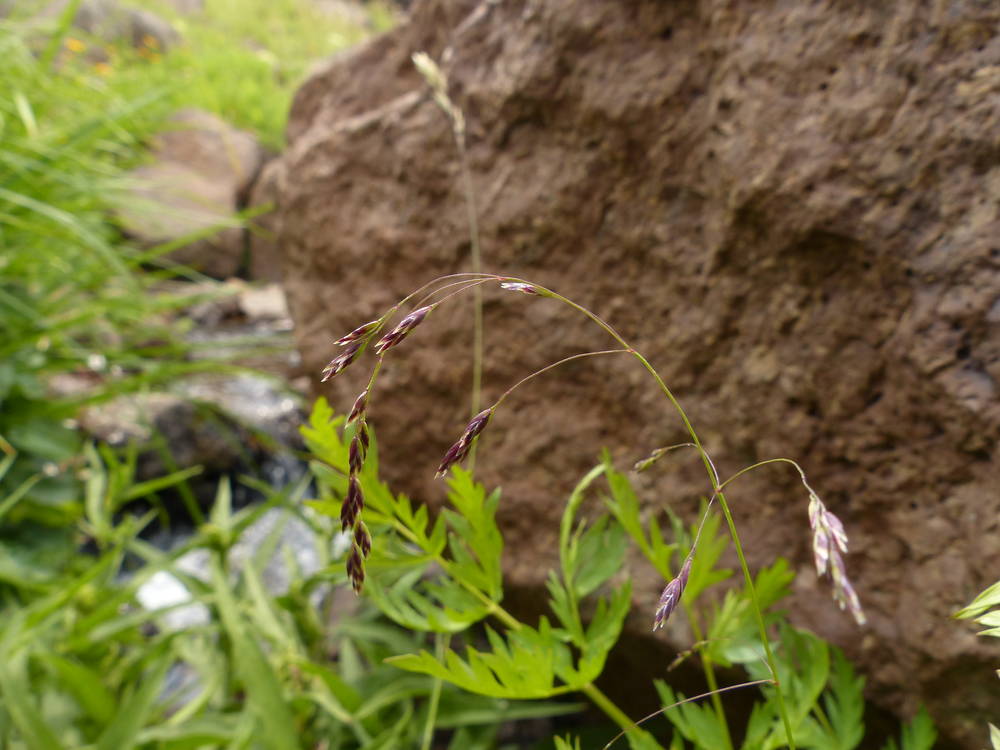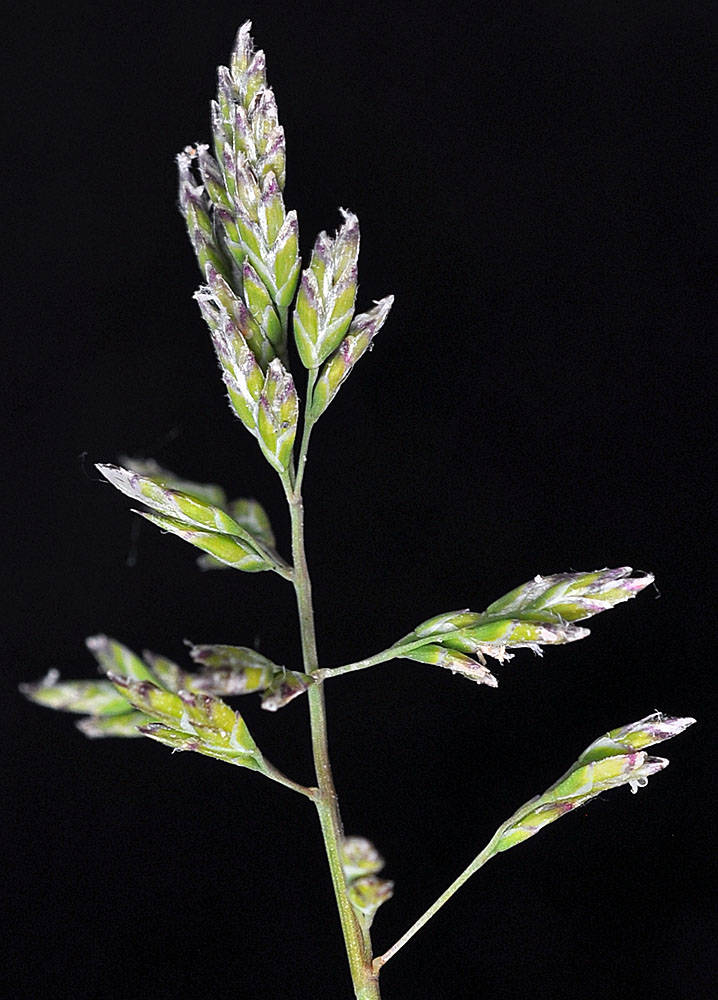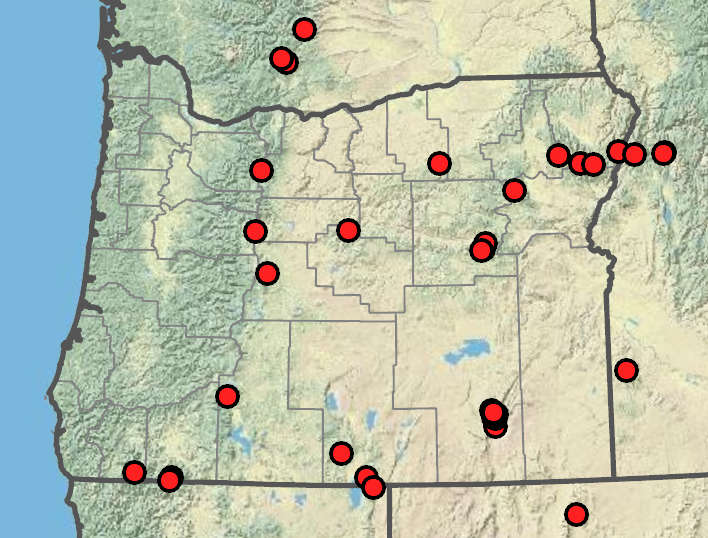Poa leptocoma
Poa
bog bluegrass
bluegrass
usually unbranched above the base.
mostly extravaginal.
sheaths closed 25–67% of their length; smooth or sparsely scabrous;
ligules 1.5– 4(6)mm;
blades flat, 1–4 mm wide.
sheaths mostly closed to mostly open;
ligules membranous, truncate to acuminate;
blades flat, folded, or involute; the upper side with 2 longitudinal grooves;
tips often prow-shaped.
lax; open; sparse, 5–15 cm;
branches spreading to reflexed; capillary; (2)3– 8 cm, 1–3(5) per node, usually moderately scabrous, with (3)4– 15 spikelets.
panicles, occasionally reduced and raceme-like;
disarticulation above the glumes and beneath the florets.
lanceolate or narrowly lanceolate, 4–8 mm, green, or partly purple to dark purple;
florets 2–5.
usually laterally compressed, occasionally nearly round in cross section, usually lanceolate, sometimes ovate, 2–17 mm long, with (1)2–6(13) florets, occasionally forming bulblets.
tapered from the base or lanceolate; thin;
keels usually scabrous;
lower glumes 1-veined;
upper glumes distinctly shorter than to nearly equaling lowest lemma.
2, usually shorter than the lowest lemma of the spikelets, usually keeled, 1–3(5)-veined; awnless.
ellipsoidal, 1–4 mm, often shallowly grooved on the ventral side.
glabrous.
with sparse cobwebby hairs.
blunt, glabrous or with a tuft of cobwebby hairs, or with a crown of straight to slightly sinuous hairs.
lanceolate, 3–4 mm, often partly purple, distinctly keeled; thin; smooth, or sparsely scabrous near the tip;
keels softly puberulent to long-villous on 25–67% the length; marginal veins softly puberulent to long-villous;
hairs frequently sparse;
lateral veins and area between veins glabrous;
margins infolded;
tips sharply acute to acuminate, usually bronze-colored.
usually keeled, sometimes rounded over the back, 5(7–11)-veined;
margins scarious-hyaline distally;
tips truncate or obtuse to acuminate; awnless.
0.2–1.1 mm.
(1–2)3.
=42.
Poa leptocoma
Poa
Montane to alpine streamsides, lakeshores, and wet meadows. 1100–2800m. BR, BW, Casc, ECas, Sisk. CA, ID, NV, WA; western Canada and US; Asia. Native.
Poa leptocoma is a loosely cespitose grass with short anthers and somewhat open panicles. It is most similar to P. reflexa, a plant of drier habitats that has less scabrous panicle branches, longer anthers, and sparsely hairy lateral lemma veins, at least on one side of the lemma.
Cosmopolitan. Approximately 500 species; 35 species treated in Flora.
Poa is the most diverse grass genus in Oregon. Four species have two or more Oregon subspecies, bringing the total to 42 taxa. Bluegrasses are community dominants or important components of dry to moist grasslands, forests, and alpine zones. They are planted for forage as well as for soil stabilization and lawns. Poa annua, P. bulbosa, and some other Poa species may be economically important weeds in crops. Poa pratensis, P. compressa, and P. bulbosa are significant invaders of native ecosystems. The genus Poa exhibits great diversity in breeding systems, though each Poa species is usually consistent in its method of reproduction. Plants may be synoecious (with bisexual florets), gynomonoecious (with both bisexual and pistillate florets on the same plant), sequentially gynomonoecious (with a higher proportion of pistillate florets as the season progresses), gynodioecious (some plants with only pistillate florets and others with bisexual florets), or dioecious (with separate male and female plants). Self-fertilization is common. Some plants set seed apomictically (asexually). One introduced Oregon species produces bulblets asexually in the inflorescence. Many species reproduce vegetatively through spread of rhizomes or stolons. The prevalence of asexual reproduction and selfing in combination with at least occasional outcrossing produces a complex pattern of variation in Poa that can lead to disagreement about species limits. This Poa treatment follows that of Soreng (2007). The most widespread and abundant bluegrasses in Oregon are introduced P. annua, P. bulbosa, and P. pratensis and native P. secunda. Other relatively common species include introduced Poa compressa, P. palustris, and P. trivialis and native P. cusickii and P. wheeleri. All other species are uncommon or rare in Oregon.
Rob Soreng, Barbara Wilson, Richard Brainerd, Nick Otting
Rob Soreng, Barbara Wilson, Richard Brainerd, Nick Otting
- Local floras:
BC,
OR,
WA
- Local Web sites:
Flora NW,
PNW Herbaria
WildflowerSearch
iNaturalist (observations)
USDA Plants Database
- LBJ Wildflower Center
- SEINet
- Plants of the World Online
- Encyclopedia of Life
- Wikipedia
- Google Image Search
- Local floras:
CA,
OR,
WA
- Local Web sites:
CalFlora,
CalPhotos,
Flora NW,
PNW Herbaria
WildflowerSearch
iNaturalist (observations)
USDA Plants Database
- LBJ Wildflower Center
- SEINet
- Plants of the World Online
- Encyclopedia of Life
- Wikipedia
- Google Image Search




